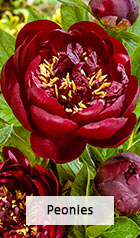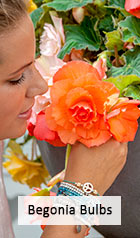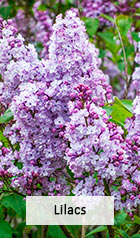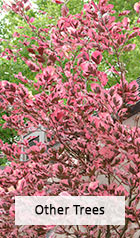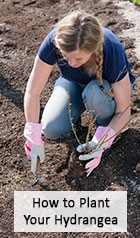- Fall Preview
- Perennials
Close X
Reliable color year after year.
- Bulbs
Close X
Fill your summer with blooms.
- Clematis & Vines
Close X
Provide ambiance and romance.
- Shrubs
Close X
Habitat, color & design possibilities.
- Trees
Close X
A gift for the next generation.
- Patio Orchard
- Fruits
- Tools & Décor
Close X
The right tools make gardening a pleasure.
- Spring Clearance
- Gardening Resources
Close X
Tips and tricks for easy, beautiful gardens.
Tulip Bulbs
Treasured spring classics

A striking spring perennial, you'll enjoy the simple and iconic beauty of tulips year after year. These flowers have such a huge array of colors, ranging from white, pink, lavender, orange, purple, red, and more that it's easy to make them the highlight of your garden. Use these gorgeous tulip bulbs, available in many varieties, to adorn your flowerbed or borders. Looking for something especially bright and striking? Try planting dazzling parrot tulip bulbs along borders or walls, or embellish your flowerbed with ornate Holland and Dutch Tulip plants. You can even enjoy these flowers in a gorgeous cut-flower arrangement. Look no further for the highlight of your flowerbed: tulip bulbs are perfect for all gardens due to their versatility, sturdiness and vivid colors.
How do tulip bulbs grow?
Nothing announces the coming of spring like graceful tulips. Understanding the bulbs from which they grow can make gardening with tulips a little easier.
Tulip bulbs contain five parts. At the base of the bulb, you'll find the basal stem, which connects the plants flowers, leaves, and roots. Roots grow from the basal stem downward, and absorb water and nutrients for the plant. Above the basal stem, you'll find the flower bud, which will mature into the plant's full grown flower. The scales, which surround the flower, contain the leaves that will eventually sprout from the bulb. The scales also hold food and water that will allow the plant to grow. The outer cover of the bulb is the tunic. All of these pieces work together to create a beautiful flower.
Through the late fall, tulip bulbs develop root systems below ground level. Then throughout winter, the bulbs rest and store energy under the cold ground. When spring arrives, the starch stored in their scales begins to process, and that reaction initiates the tulips' sprouting. Through the blooming season, the plants receive their energy from nutrients taken up by the roots, and their remaining stored energy goes into blossoming. The leaves will photosynthesize light into new energy to be stored in the bulb for the next growing season.
How to plant tulip bulbs:
Tulip bulbs should be planted in mid fall to give them ample time to develop roots before the cold winter. Choose a location in your garden that receives full sun and has well–draining soil. Before planting your bulbs, aerate the soil, and add loam or compost for drainage. Don't pour compost or fertilizer directly onto your bulbs, as this will burn them.
Space your tulip bulbs at four to five inches apart. Bulbs should be planted at a depth of about three times the height of the bulb, with the pointed ends facing up. Water the bulbs in at the time of planting, then simply allow your tulip bulbs to rest until the blooming season.
When to plant tulip bulbs:
Tulip bulbs need a cold period to develop their roots, with springtime warmth initiating the growing season. By planting tulip bulbs in fall, you'll ensure that they benefit from winter's chill, but that they don't expend unnecessary energy sprouting foliage in the late summer heat. Tulip bulbs should be planted after the ground has cooled in autumn. In most of the United States, the soil stays below 60 degrees by October. Soil in warmer climates, such as the southern states, may stay warm into early November. In zones 9 and above you will need to plant your tulip bulbs in the later months of November or December.
What animals eat tulip bulbs?
Tulips grow from large, juicy bulbs packed with leaves—and those succulent bulbs are tempting to wildlife over winter. Even though tulips are toxic for cats and dogs, rodents and squirrels have no problem making a meal of tulip bulbs. Mice, chipmunks, gophers, rabbits, and voles are frequent offenders, as well. Even deer will eat tulip bulbs if winter food supplies are sparse. So, how can you keep the wildlife from eating your tulip bulbs?
One of the easiest deterrents is a simple animal repellant, to be applied to the planting area. Some repellents are even safe for soaking bulbs. Many repellents are based on pheromones or urine from predatory animals, and some include mild irritants to discourage rodents and bunnies from hanging around your garden.
Physical barriers are also useful in preventing wildlife from carrying off your tulip bulbs. Use gravel over the planting area, then cover with more soil. Gravel above the bulbs will keep digging critters at bay. Or, lay a piece of chicken wire after your bulbs are planted and covered with soil. The plants will be able to sprout through the porous barrier, but animals won't be able to venture underground. Cover the chicken wire with mulch to keep the aesthetic of your garden clean. You can also place your bulbs in a bulb basket like the one on the Spring Hill website.
If you find that squirrels and mice are drawn to your tulip beds, try adding deer– and rodent–resistant plants into the mix. By including less–tasty bulbs like crocuses, hyacinth, allium and daffodils into your tulip beds, you'll make the beds less of an all–you–can–eat buffet.
Are tulips toxic to cats or dogs?
Tulip bulbs are cultivated in many enticing shades—but your pets should be dissuaded from tasting these bulbs. Tulip bulbs contain alkaloid chemicals called glycosides that can become caustic when ingested by dogs or cats. While glycosides are present in all parts of the tulip plant, most of these toxic compounds are contained in the bulb of the tulip. If your pet chews on tulip bulbs, stems, or leaves, contact your veterinarian.
The best way to keep pets from chewing on tulips is to keep them away from the plants, and especially from the bulbs. Use fencing to separate curious pooches and kitties from your tulip plantings, and don't bring the dog along when you garden in your tulip beds. If you have a dig–happy puppy, prevent bulb excavation by covering the bulbs with chicken wire during planting.



